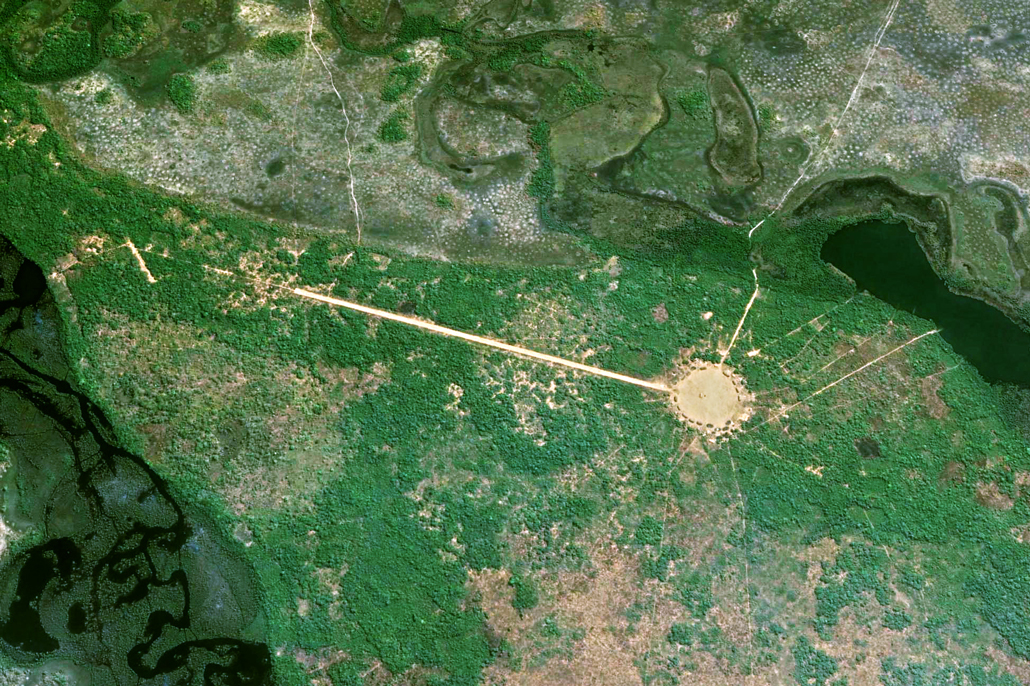Native Amazonians make rich soils — and ancient people may have too
This fertile soil may be a huge, overlooked carbon store

Growing crops in the Amazon’s nutrient-poor dirt is tough. In a tradition that may be thousands of years old, native Kuikuro people in Brazil overcome this issue by making their own fertile soil. This carbon-rich soil is made from ash, food scraps and controlled burns.
Morgan Schmidt
Share this:
- Share via email (Opens in new window) Email
- Click to share on Facebook (Opens in new window) Facebook
- Click to share on X (Opens in new window) X
- Click to share on Pinterest (Opens in new window) Pinterest
- Click to share on Reddit (Opens in new window) Reddit
- Share to Google Classroom (Opens in new window) Google Classroom
- Click to print (Opens in new window) Print
By Freda Kreier
This is another in our new series identifying technologies and actions that can slow climate change, reduce its impacts or help communities cope with a rapidly changing world.
CHICAGO — Native people in the Amazon may have been creating fertile soil for farming for thousands of years. And what they learned could offer lessons for people concerned about climate change today.
The Amazon River basin covers much of central South America. Across that basin are archaeological sites. These are places where ancient people left their mark on the land. And patches of strangely fertile soil dot the landscape at many of these sites. It’s darker in color than surrounding soils. It’s also richer in carbon.
Scientists have long debated the origin of this so-called dark Earth. Researchers now know that native Kuikuro people in southeastern Brazil make similar soil around their villages. The finding hints that long-ago Amazonians made this type of soil, too.
Taylor Perron is an Earth scientist at the Massachusetts Institute of Technology in Cambridge. He shared his team’s new findings December 16 at a meeting, here, of the American Geophysical Union.
That Kuikuro people make dark Earth today is a “pretty strong argument” that people were also making it in the past, says Paul Baker. This geochemist works at Duke University in Durham, N.C. He was not involved in the research.
The dark Earth that ancient peoples made may have been good for more than farming, Perron points out. This soil also could have stored huge amounts of carbon. It might therefore offer a blueprint for trapping carbon-rich gases from the air and storing them in soil, Perron says. Sucking such planet-warming gases out of the air could help fight climate change.
Altering the Amazon
The industrial world has long viewed the Amazon as a vast wilderness — one that was mostly untouched before Europeans showed up. One reason for this idea was that the soil there is nutrient-poor. (This is normal for tropical soils.) People of European descent assumed people native to the Amazon couldn’t do much farming. And many modern people thought large-scale farming was needed to support complex societies.
But a slew of ancient finds in recent decades has been turning that idea on its head. Plenty of evidence now shows that people were shaping the Amazon for thousands of years before Europeans arrived. Ancient city centers have been found in modern-day Bolivia, for instance.
Most scientists now agree that finding dark Earth near archaeological sites means ancient Amazonians used this soil to grow crops. Some archaeologists have even argued that people deliberately made the soil. Others have argued that dark Earth formed naturally.
To find out more, Perron became part of a team that reviewed interviews with Kuikuro people. A Kuikuro filmmaker conducted those interviews in 2018. Kuikuro villagers reported making dark Earth using ash, food scraps and controlled burns. They call the product eegepe.
“When you plant where there is no eegepe, the soil is weak,” explained Kanu Kuikuro. She was one of the interviewed elders. She explained that this is why “we throw the ash, manioc peelings and manioc pulp” into the soil. (Manioc is an edible tuber, or root. It’s also known as cassava.)
The researchers also collected soil samples. Some came from around Kuikuro villages. Others came from some archaeological sites in Brazil. There were “striking similarities” between dark Earth samples from ancient and modern sites, Perron says. Both were far less acidic than the soils around them. They also contained more plant-friendly nutrients.

Dark Earth as carbon storage
The soil samples also revealed that on average, dark Earth holds twice as much carbon as the soil around it. Infrared scans in one Brazil region suggest the area holds many pockets of this dark Earth. That soil may store up to about 9 million tons of carbon that scientists have overlooked, Perron’s team says. That’s about as much carbon as a small, developed country emits per year (in the form of greenhouse gases, such as carbon dioxide or methane).
Dark Earth across the Amazon might hold as much carbon as the United States emits into the air each year, Perron says. But that estimate is based on data from just a small part of the Amazon.
Pinning down the true amount will require more data, says Antoinette WinklerPrins. A geographer, she works at Johns Hopkins University in Baltimore, Md. Still, she says, the new research could offer insights into the Amazon’s past and future.
For one thing, the technique highlights how ancient people were able to thrive there. Today, making dark Earth — or something like it — could boost farming there and elsewhere at the same time it would be helping pull carbon out of the air.
“People in the ancient past figured out a way to store lots of carbon for hundreds or even thousands of years,” Perron says. “Maybe we can learn something from that.”







